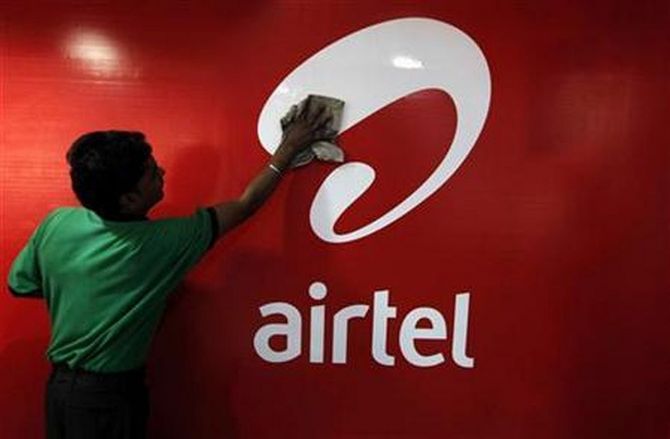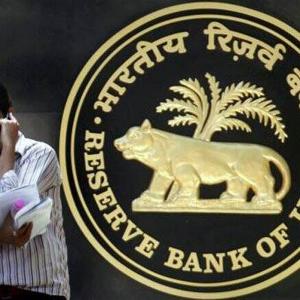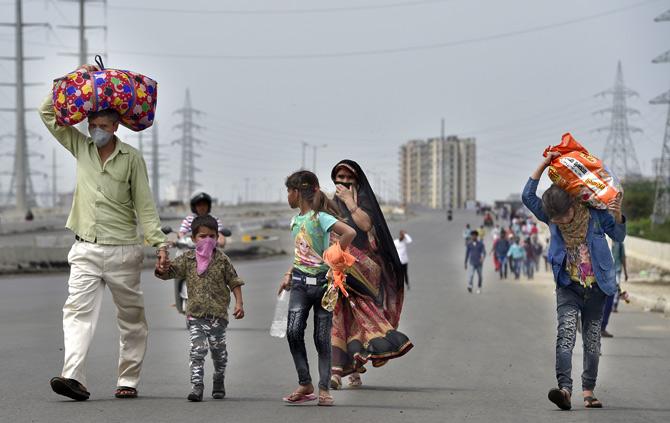Analysts say that Jio’s substantial slowing down in net additions is possibly because the company has dramatically reduced its bundled 4G feature phone offering, which contributed an average 30-40 per cent of its net additions.

After having stood its ground for four years from Reliance Jio’s sustained onslaught, Bharti Airtel is now hitting back on many fronts: subscriber additions, defending and expanding its postpaid customer base, taking on Jio in broadband fiber-to-the-home (FTTH), and developing its own 5G open radio access network in collaboration with partners.
Airtel announced its second quarter (Q2) 2020-21 (FY21) results last week, springing a surprise by declaring a net subscriber addition of 13.9 million, mostly in 4G.
That’s nearly double that of Jio’s (7.3-million net additions in the same quarter) - its lowest in two years.
This is also the first time Airtel has surpassed Jio in terms of net additions since the latter launched 4G services.
Airtel is also pleased that its churn was at an all-time low of 1.7 per cent (last quarter it was 2.2 per cent) and that Jio’s churn, which was low at 0.46 per cent in the April-June quarter, went up this quarter to the same levels as Airtel’s (1.7 per cent).
Despite the increase in subscribers, Airtel’s average revenue per users (ARPU) are still up by 3 per cent, partly because of 4G subscriber net additions and also due to an increase in postpaid subscribers.
All this, moreover, without an increase in tariffs (still a million-dollar question).
Airtel says that, with a premium in tariffs over Jio of 20 per cent, it won’t be the first mover.
However, SBI Caps projects that Airtel will exit FY21 with an ARPU of Rs 171, going up to Rs 182 in 2021-22, with 65 per cent of its subscriber base becoming 4G in the next four to five quarters.
Analysts say that Jio’s substantial slowing down in net additions is possibly because the company has dramatically reduced its bundled 4G feature phone offering, which contributed an average 30-40 per cent of its net additions.
It attracted 2G customers to upgrade to 4G at a very low cost of sub-Rs 2,000.
According to JPMorgan, based on the IDC data, shipments of the Jio phone during this period were soft at only 1.1 million devices.
The success of this over 18-month long strategy can be gauged by the fact that the 4G feature phone attracted more than 110 million customers to Jio, accounting for a fourth of its subscriber base.
The company announced a few months ago that it will come out with low-cost, smart, Android phones in a tie-up with Google.
But insiders say the launch might take another three to four months.
Analysts argue that Airtel could leverage this time, when Jio does not have any killer bundled offer, to woo more customers away from Vodafone Idea, which has seen a consistent loss of customers month-on-month.
And there is also nothing stopping Airtel from working out a similar offering bundled with a smartphone, even though they have not done it so long.
They also argue that Airtel is closing the wireless revenue growth gap, quarter-on-quarter with Jio.
For instance, Airtel’s wireless revenues are up 7 per cent in Q2, compared to a fall of 1 per cent the previous quarter.
Jio revenues in Q2 are up 5.5 per cent, compared to 12 per cent the previous quarter.
Airtel has also shown a growth spurt in postpaid customers, despite Jio aggressively offering new tariff offers bundled with over-the-top (OTT) platforms.
Jio’s earlier tryst with postpaid was very lukewarm and its share of subscribers has been minimal - less than 1 per cent of its total.
In contrast, Airtel has added 0.8 million postpaid customers - the highest in 20 quarters.
Their importance is evident from the fact that their average ARPUs, based on past trends, are nearly 2-3x of that of prepaid customers.
The full impact of Jio’s postpaid entry tariff of Rs 399 (up from Rs 199) launched in September-end and bundled with OTT platforms such as Netflix, Amazon Prime, and Hotstar, on VIP subscriptions will only be reflected in the third quarter FY21 results.
Airtel executives are nonchalant.
“They have substantially increased the postpaid tariffs and added OTT which you can, in any case, buy on your own. In postpaid, they have avoided getting into a price war.
"Our experience is that postpaid customers are sticky to the service and don’t churn,” said an Airtel executive.
Airtel is also moving aggressively in the FTTH space where, again, it faces Jio in the ring.
For instance, in Q2, home broadband subscribers were up by 129,000 to 2.6 million as it increased roll-out of FTTH in 50 more cities, reaching 150 cities.
While Jio does not give FTTH subscriber numbers separately in its Q2 results, based on the latest Telecom Regulatory Authority of India data of July, Jio had 1.16-million wired broadband customers, half that of Airtel.
Jio’s offer and price are being matched by Airtel too. In the first week of September, Jio launched an aggressive Rs 399 plan but with a killer deal: an offer of unlimited data across all tariffs for FTTH.
Six days later, Airtel matched the unlimited data offer and reduced the price of its entry-level FTTH from Rs 799 to Rs 499.
The even bigger play put in place by Airtel is to substantially reduce the gap with Jio in the number of cities where FTTH services are available.
To this end, it has tied up with local cable operators who will provide the last-mile connectivity.
The aim is to offer the service in over 1,000 cities in the next 12-18 months.
“The target is to reach over 40 million of the 240-million households in the country,” said an Airtel executive.
Clearly, this will substantially reduce the gap with Jio, which has rolled out broadband services in 2,000 cities and is looking to reach 50 million homes.
One area where Airtel continues to lag behind is that it has a leverage of 2.9x, compared to Reliance Industries, which is debt free.
SBI Caps suggests it should bring this down to 1x, especially as auctions are around the corner for 4G and then for 5G within the next year.
Jio has shown it can raise money globally from the best, including giants like Facebook and Google, who have also become partners.
But Airtel has been no laggard either.
It has raised $8 billion in the last 18 months through a combination of debt and equity which included private equity and sovereign funds.
The only major difference is that it has not tied up with any technology company.
Whether it will do so is a question which many are already asking.
Photograph: Rupak De Chowdhuri/Reuters










